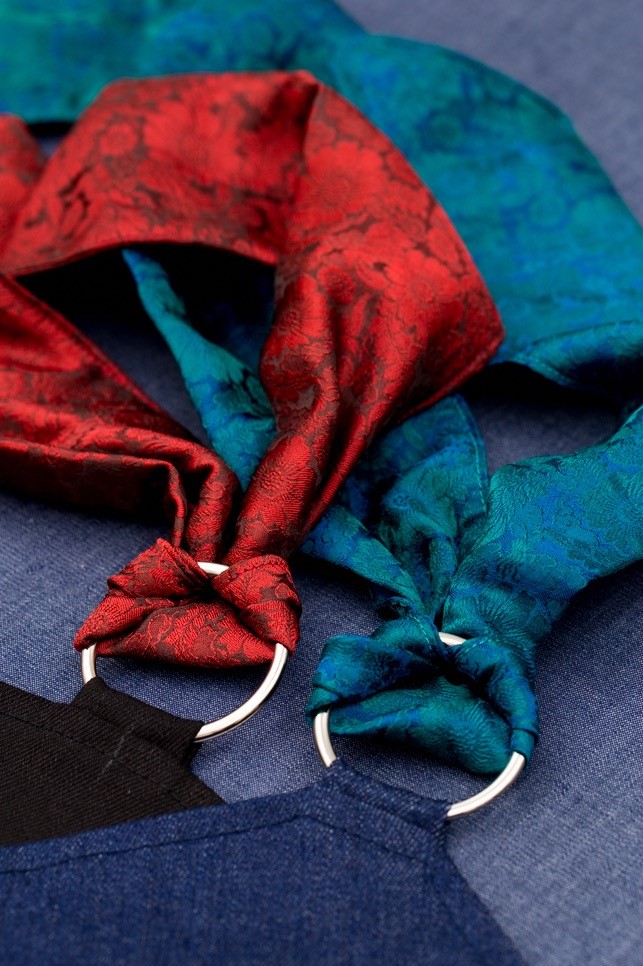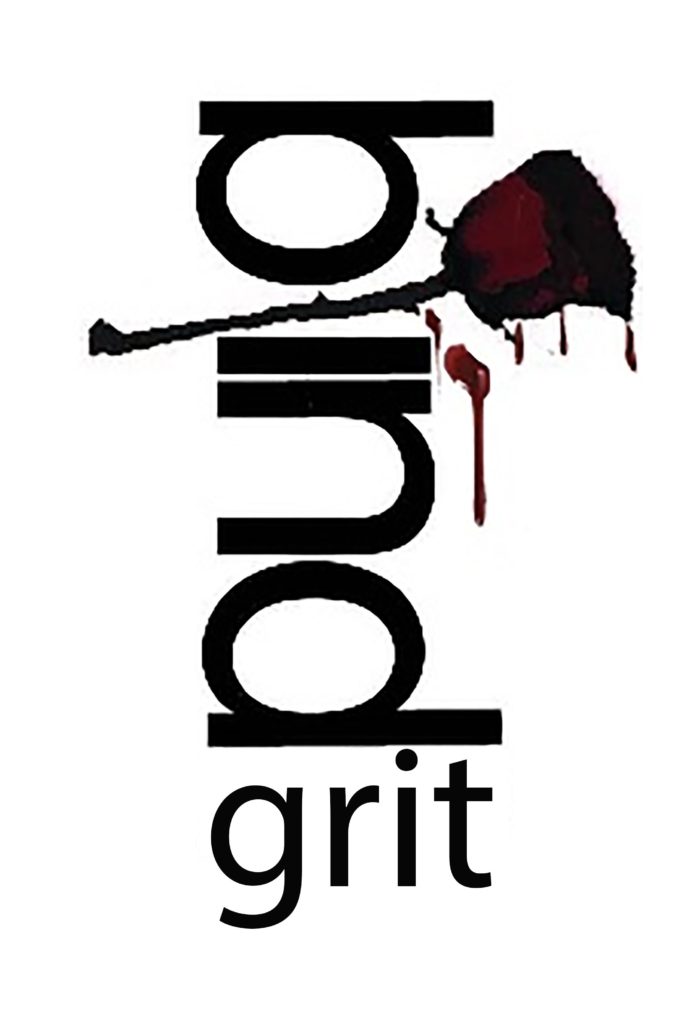IDEAS recently interviewed Nikki Hind about the launch of her clothing label, Blind Grit and her first designer collection hitting the runway at Melbourne Fashion Week for our podcast.
Nikki Hind is a forward-thinking fashion designer creating inclusive and chic athleisure wear for her up-and-coming designer label Blind Grit. Nikki’s first collection recently hit the runway at the Melbourne Fashion Festival at an inclusive event, Access to Fashion, organised by disability advocate Carly Findlay. IDEAS recently interviewed Nikki about the launch of her clothing label, Blind Grit, for our podcast.
[ABRIDGED TRANSCRIPT]
So, how do you feel the fashion industry excludes people with disability?
I think it’s pretty apparent when you look at the absolute plethora, the magnitude of images that we are all surrounded by; in shop windows, on billboards, in magazines, on phones, on the TV, just everywhere, everywhere, everywhere… we are bombarded by images and there would be very close to none of them that show people with disabilities, in any particular line of fashion, not just clothing. They’re not depicted on couches, in cars, in clothing, cosmetics… As Carly Findlay says, which I thought was very funny and very true, “if you look at all these images you wouldn’t know that people with disabilities exist outside a medical setting.” They’re just not represented in the imagery.
[In mainstream society?]
Yes, so this is number one.
At the recent Access to Fashion event that I was at, both speaking on the panel and showing my designs at Melbourne Fashion Week, there were a couple of lovely young men there, boys, probably eleven, and what they were saying, which is so obvious, but it was just kind of really impressive hearing it come from them and heartbreaking, saying “I want to see people like myself. I don’t want to feel different.”
You know people with disabilities, children with disabilities, growing up not seeing themselves reflected in all the imagery around them, in what we’re apparently supposed to be aspiring to, and that’s heartbreaking, that’s really awful. It’s such a no-brainer but I think as a society we’ve gotten really used to not even bothering to think about that. It was just heartbreaking and fabulous to hear this young man, you know, “from the mouth of babes”, to hear him it says it so simply. It’s such a no-brainer. We don’t want our kids growing up thinking “where am I seen in this world? I don’t fit in” and that’s just in our faces, it’s unavoidable, everywhere. So that’s the number one thing, but it’s like the façade that represents what’s going on behind it.
Just putting people with disabilities in the imagery, that’s not going to cut it either, it’s an awesome start and a super important start and way overdue but I feel very strongly about having people with disabilities in a position of decision making so currently there are a few models starting to be used with disabilities in various campaigns and by various brands which are really great and I applaud them for that, that is overdue and fabulous. However, currently, people with disabilities are still relying on big brands run by those who don’t have disabilities, relying on them, hoping to hell that they see some value in having them in their campaigns and having them represented.
The decisions are not being made by people with disabilities, not just in fashion but in the majority of areas in society so the idea with Blind Grit that we need designers and labels and brands, where the decisions are being made intrinsically right throughout the brand by people with disabilities.
Can you talk a little bit more about Blind Grit and what your plans are for that, are you designing inclusive or adaptive clothes for people with disabilities?
Well not currently, but having said that, I guess I design things that I would like to wear. Being legally blind, I don’t drive, so I’m out walking and riding bikes and I’m also fair skinned and sunburn really easily so certainly, I want to wear clothing that I can ride bikes and walk in comfortably and not get sunburnt in but that also look nice to go to a business meeting or heaven forbid on a date (which I haven’t done for a very long time).
[So everyday clothes?]
Well you know at the moment there is a bit of a divide between things that protect you from the sun and the super comfy to walk and ride bikes in and things that look sophisticated, funky, stylish, edgy so I guess I design in that way, taking myself and others who don’t drive into account, however, with Blind Grit, the people, everybody behind the brand, everybody except the manufacturers, the people who manufacture the clothing, will be people who either live with disability or have survived trauma.
So although currently I’m not actually designing specifically for people with disabilities, I would hope that as we go along, my insight will grow into what would be handy and what would be a crossover rather than something that is specifically for someone with a disability. What things, what simple little things would be of assistance but that mainstream fashionistas would love and is just that bit easier and handier for people with disabilities.
I learned several things at the Access to Fashion event about what kinds of things are handy and comfy and to take in to consideration so I would hope as I bring more people on board, because again the decisions will all be, all the people behind the brand will be people with a disability or survivors of trauma so all the ideas will be coming in from these people who have experienced different levels of disability and who know what’s not useful and what is.
So that sort of goes in to a little deeper a question I had about some of the fabrics you choose to work with, there was mention of denim, bamboo and also silks?
Well, that first collection that I created which wasn’t as such Blind Grit that was the first collection I created because I thought “Right, I’m going to give this a go. I want to see if I can do this.” So I created that collection and it was silk and denim, which I love. I love denim and I love the versatility. Silk and denim are very different to each other in where you would wear them and when you would wear them and how they wash, drape so all that, so I wanted to put them together so that first collection is kind of things that are kind of robust and resilient yet really fine and elegant. That combination.
[Beautiful.]
I wanted to put those together. I love that first collection and that first collection was the one on the runway at Melbourne Fashion Week and that was the collection that kicked off Blind Grit...
The last question I had was actually about us. I just wanted to know how you connected with IDEAS and if you found our service helpful at all?
Oh, huge, because with the new NDIS, I was very grateful and very happy to have received funding to assist with both my daily living and in the work I do so what I was actually specifically looking for: mentoring to help with some of the areas that I struggled with to get Blind Grit off the ground. Electronic pattern making, getting ready for manufacture, that kind of really specific stuff that is probably a bit left field of what…
[Of our sort of general enquiries?]
I guess so, yeah, because I think there’s a very strong focus on entry level positions for people with disability, which is another thing I feel quite strongly about, I think there are huge opportunities missed there and a little condescending to say the least. So there was very limited provision for assistance with starting a business. In terms of gaining employment, the NDIS funding is very much kind of aimed at getting entry level positions through agencies, that kind of thing.
So my lovely LAC (Local Area Coordinator) said, because we were having difficulty finding the right thing to really nail what I most needed help with, said to call you guys and I called lovely Brittney who I could tell was really happy to be looking for that, like for something slightly left field to assist and yeah, she worked on that and found that and connected me with just the right people.
She was just so lovely, and friendly and so I sent her little updates then, of when I got invited to Melbourne Fashion Week and all those things. But no, quite key, very key, because it was you guys who linked me with the people who are much more appropriate, pinpointed, and narrowed it down to a really good fit of what would be most helpful for what I’m trying to achieve.
That’s awesome, well thank you so much for speaking to me today.
[END TRANSCRIPT]
Interviewed by Hillary Wilde, Online Editor for IDEAS



